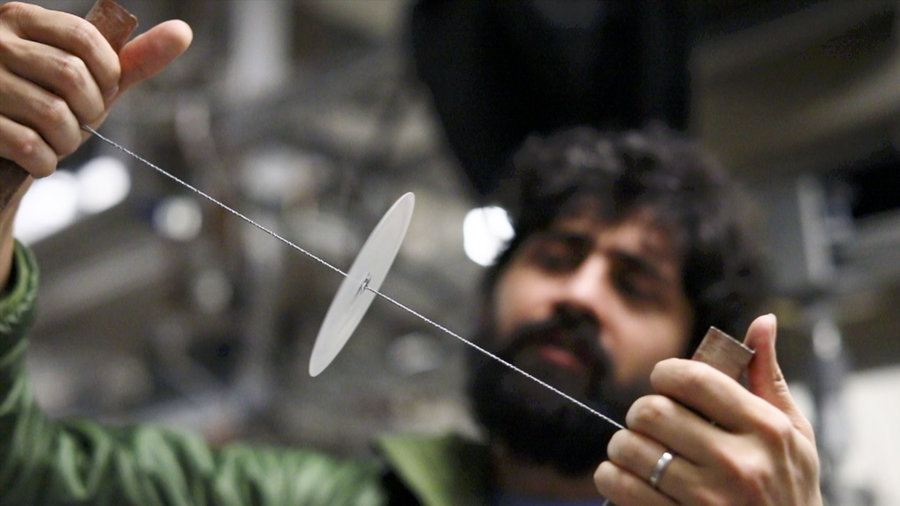Above image credit: teamLab
In a previous post, we mapped out the needs and desires surrounding the future of connectivity, all of which were based on an extensive, 6-month, multimarket study called Impressions of Connected Futures, lead by Product Innovation.
As we explained in our introduction to this last post, our discoveries revealed significant tensions between the benefits of connectivity and its detractors; in turn, we believe that opportunity can be found at both ends of the spectrum. And straddling both will be key, not just because it presents more opportunities, but because a lot of the emerging detractors are becoming a responsibility we must own up as a provider of a utility people are struggling to switch off – increasingly, with detrimental effects. In this second post, we will aim to reveal what these detractors are (we position them as associated risks of the needs and desires from the previous post), and what we can consider doing about them now to ensure the future of connectivity is a sustainable one.
Freedom <—> Exposure
Amplification <—> Dependency
Belonging <—> Narcissism
Growth <—> Absorption
Equilibrium <—> Overload
EXPOSURE
Fulfilling the aforementioned desire for ‘freedom’ from the mundane tasks and activities our everyday contains, requires openness and transparency across a vast quantity of personal data, as these ultimately power the services and objects that promise to free up time. Tracks of movements, consumption, and character are voluminous, whilst (often) scattered beyond sight or grasp. This inevitably leads to vulnerabilities, most of which aren’t always known or even contemplated.
Yet, staying on top of tracks and finding the best solutions to keep these safe is increasingly a dead end – as Miko Hyponnon, ‘hacker hunter’ and security luminary at F-Secure told us at Wired Security this year, “If there is one thing I’ve learned about people it is that people will never learn. Education is a waste of time.”
Effortless security measures therefore remain a dominant need in relation to personal data, and products, like Privacy, which provides people with single-purpose credit cards (generating a new one for each service a user signs up to), will thrive. As emotion data is due to join that shortlist in due time, these measures are crucial to get right and be accountable for in order to ensure it’s shared with peace of mind. The notion of single-purpose, disposable identifies as a way of ensuring the quantity of tracks are kept to a minimum could be a fruitful way of helping people feel, as well as be, safe. But true to the insight that people don’t ever learn, greater accountability on our part that involves taking security off customers hands altogether is recommended.
DEPENDENCY
Technology’s ability to amplify our bodies and brains will continue to foster an over-reliance on it, to the tune of forgetting basic physical and mental skills like memory, navigation, maths (40% of hyperconnected 16-24 year olds agree). Denial of access results in feeling lost and anxious – not least because the maximisation of time is under threat. Consequentially, there is appetite for relearning basic life skills, with 50% of our hyperconnected’s expressing a desire for doing so. It is no coincidence that popular culture is having a love affair with the survivalist genre on TV.
The fascination with survival in extreme circumstances (and often, peril), suggests there is a longing for reminding ourselves what means to be human, and what the species is capable of without connectivity, apps or robots. In the opening sequences to Bear Grylls’ The Island, most participants even cited their motivation to come onto the show was to see whether could survive without Google. Naturally, this raises the question of whose responsibility it is to help customers retain these skills, for all those in the business of the fuelling the dependency. But moreover, on a much grander scale, as Werner Herzog recently contemplated in Lo and Behold, in the (not necessarily unlikely) event of the Internet grinding to a halt – what is the plan B to ensure the world can still work?
NARCISSISM
As a behaviour, narcissism is lauded and promoted by popular culture and technology alike, thereby granting permission to spend vast chunks of time creating and managing one’s personal image. Drivers are plentiful – from seeking validation, to wanting to fit in, or often to overcompensate for an insecurity. And in absence of immediate responses to such efforts, 38% of hyperconnecteds claim to be overwhelmed by anxiety. In an article that likens the rapid rise of narcissism to that of obesity in the last ten years, psychotherapist Lucy Clyde explains: “We are trying to sanitise the messiness of human experience. Modern life is hard. If we deny our own messiness, we can’t really connect with other people and their own messiness. And that is really lonely and isolating.”
In South Korea, our fieldwork revealed that one of the main frustrations people have in social situations, where evenings that could be spent conversing or simply being together can quickly get hijacked by the meticulous editing, opining on and posting of selfies amongst a social group.
So perhaps it is timely for Facebook’s Livestream to mark a shift from ‘look at me’ to ‘be here with me’, where, as they say, “everything is raw and unfiltered” (at least until the livestream equivalents of lenses and masks are created for environments and streamers in real time). And for more selfless sharing ideas to emerge, like the Be My Eyes app, which enables blind or partially people to stream what’s in front of them to those that can see, enabling them to help with navigation or text-based needs.
ABSORPTION
Unconstrained access to services designed to maximise their hold on attention has made excessive consumption a new normal. The recent Ofcom report on the communications market cites that we (at least in the UK) now spend more time connected than we do sleeping. An hour has been added to our total daily content consumption in the mere space of a year (this used to take television up to a decade to achieve), which comes as no surprise if a single Snapchat session can last up to 20 minutes. Failure to resist the temptation of more ‘new’ results in absorption, which disregards present context, company or workload.
As a result, 45% of ‘hyperconnecteds’ claim to lack discipline required to keep screen time in check (i.e. what they believe to be a healthy amount of time), and 42% cite their attention span has been in decline as a consequence. In South Korea, the term ‘headsdown’ has emerged to describe people in a state of absorption.
Yet appetite to turn this behaviour around is big, with 1 in 2 ‘hyperconnecteds’ agreeing that they would like to develop better discipline around connected devices and experiences. Whilst self-imposed detoxes are being carried out one in three Internet users (according to the latest Ofcom report, who also point out that 4% of people have started downspinning on data plans to protect their sanity), a whole genre of ‘focus-tech’ services intended to prevent distractions and to aid focus is emerging.
These include Freedom, a social media and app blocker (‘to be more present’), Go F****** Work, a chrome extension that blocks the Internet for pre-defined chunks of time. A sustainable attention economy, including a more ethical approach to designing content experiences, is a worthwhile concept to contemplate if we, as a provider of connectivity and content experiences, don’t want to become the future’s equivalent of a stigmatised fast food company.
OVERLOAD
In light of being able to inhale everything of interest at any given moment in time, exposure to volumes of media, managing a personal image, dealing with vast quantities of choices, and feeling compelled to instantly respond to everything that is received, it is no wonder that people already feel overloaded and exhausted by the experiences connectivity facilitates. Moreover, the feeling of overload leads to doing or focussing on multiple things to the detriment of focus and depth. Whilst 40% of ‘hyperconnecteds’ agree that they feel the physical effects of using their devices too much (blurred vision, tense fingers, sore wrists), 33% fear this will only get worse in the future.
Unsurprisingly, 41% would be open to reducing their time spent on devices if someone or thing helped them do so. Products and services that function as digests for content (such as Watchup) or filters for communications (such as Google Allo) are gaining traction as they see to relieve people of overpowering streams, whilst freeing them up to place their focus or attention on other things, such as the present or tasks at hand. The pursuit of new ways to organise, distribute and ingest information, such as filters, digests and assistance, will be a key one to mitigate future consequences of overload.
The full report ‘Impressions of Connected Futures’, which includes a thorough documentation of the fieldwork and its analysis, implications for innovation based on the aforementioned themes, as well as an overview of future technologies that we must ready our networks for, is available on request from lucia.komljen@telefonica.com









